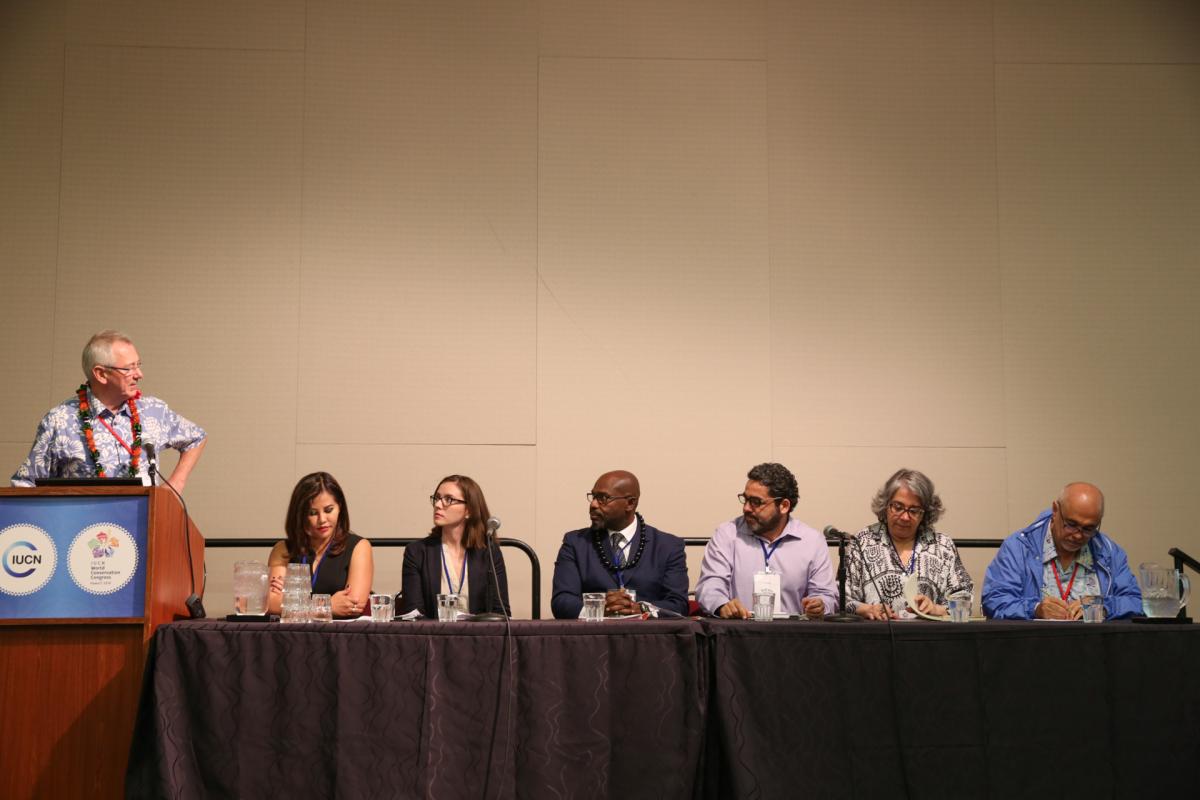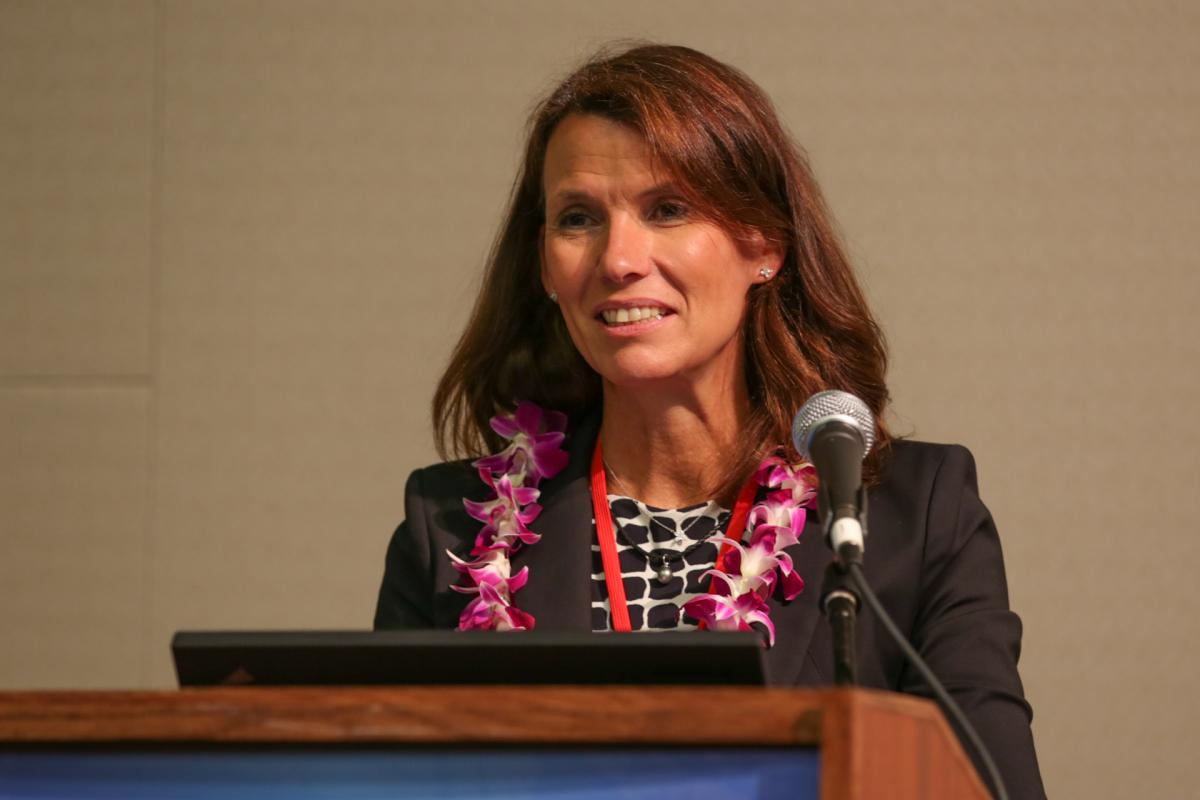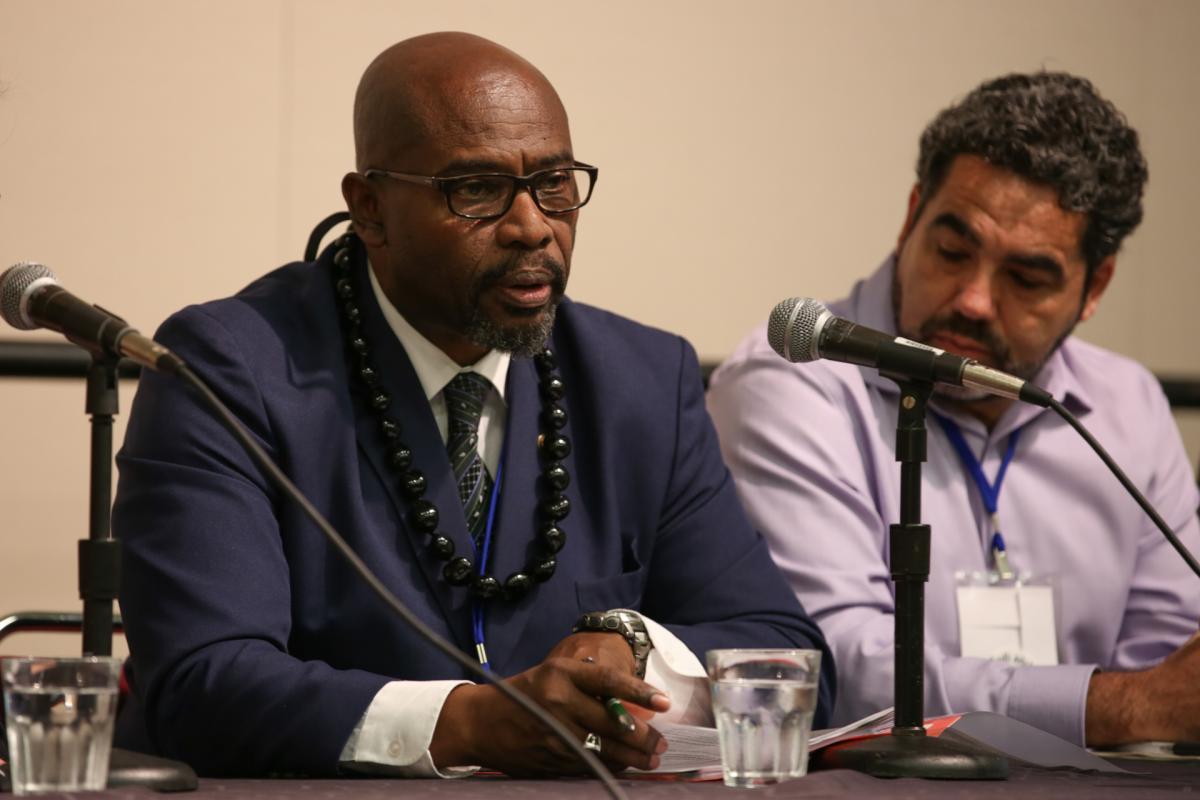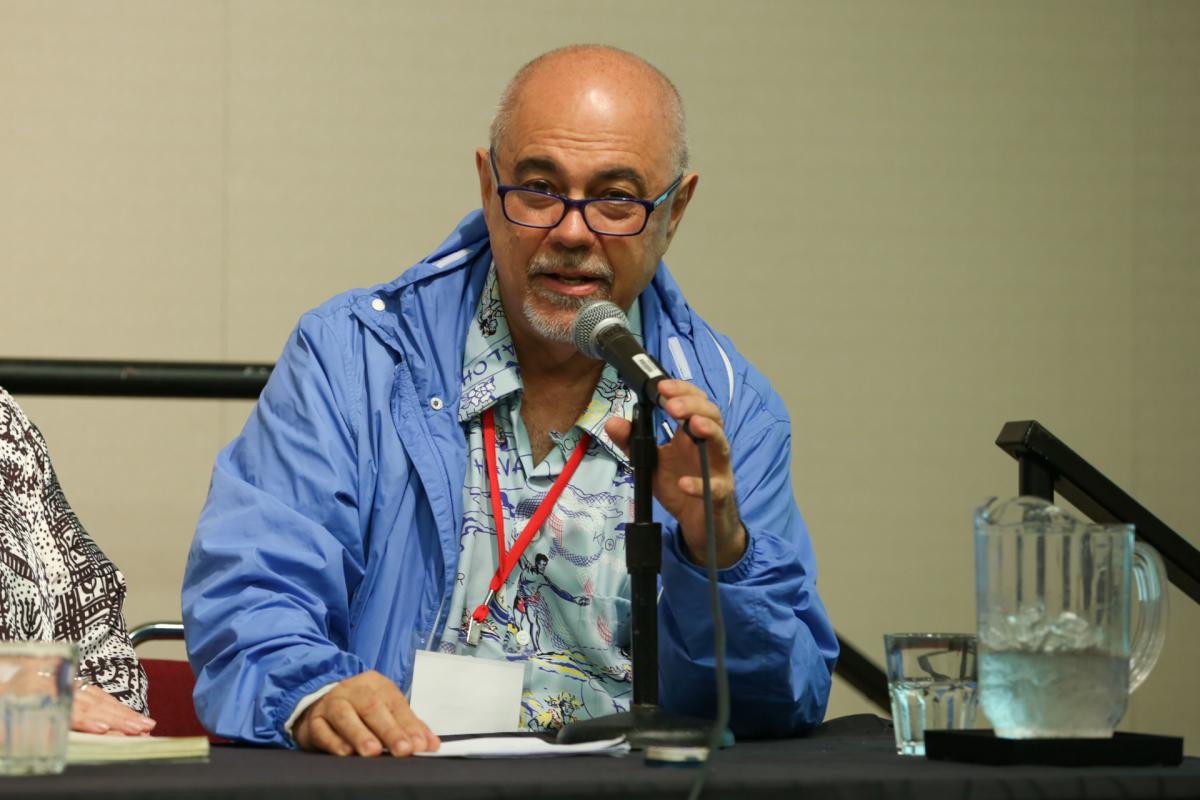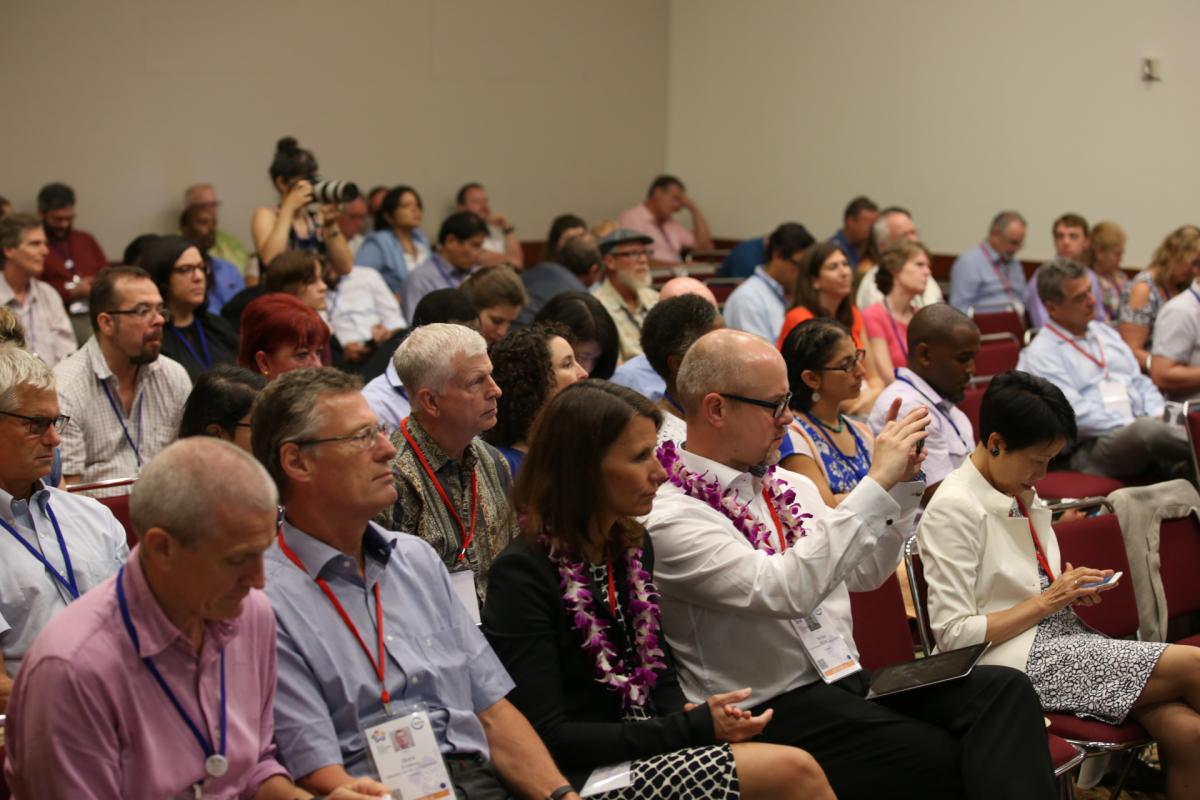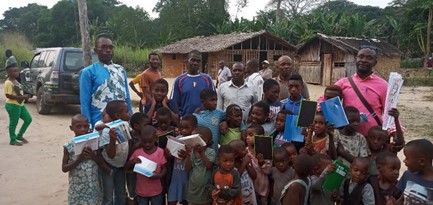Restoration leaders focus on Bonn Challenge successes at IUCN World Conservation Congress
Forest landscape restoration took the spotlight at a two-part high-level workshop at IUCN Congress in Hawai‘i, showcasing the experiences and commitment of Bonn Challenge pledgers and partners. Nadia Vandergriff from the University of Michigan reports on the first workshop, 3 September 2016.
The first Bonn Challenge dialogue at IUCN Congress, emceed by Stewart Maginnis (Global Director, Nature-based Solutions, IUCN), showcased exceptional leadership in forest landscape restoration (FLR) around the world. In her opening keynote, Naoko Ishii (CEO and Chairperson, Global Environment Facility) emphasised the significance of the Bonn Challenge, stating, “[It] has changed the conversation about restoration and moved it higher on the global agenda.”
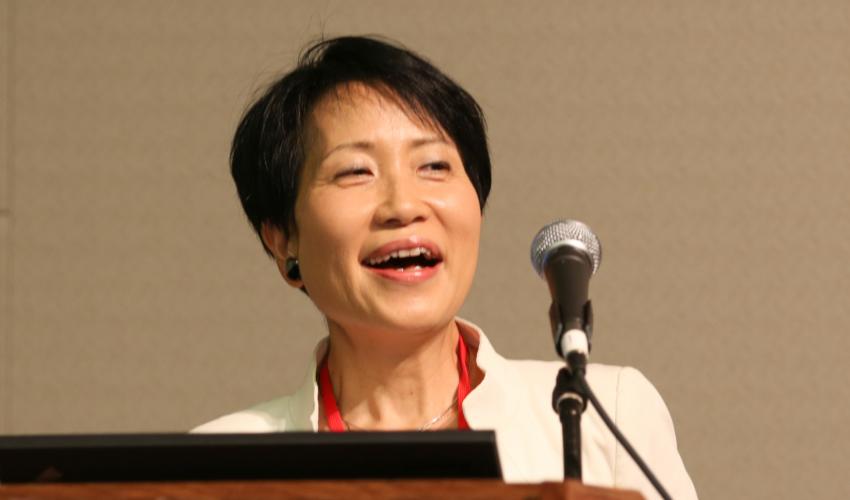 Photo: IISD/ENB | Kiara Worth and Diego Noguera
Photo: IISD/ENB | Kiara Worth and Diego Noguera
Ishii went on to announce the launch of The Restoration Initiative (TRI), a ten-country programme led by IUCN that supports the Bonn Challenge and aims to restore and maintain degraded and deforested landscapes. She outlined three notable characteristics of TRI: (1) its strong knowledge exchange component; (2) its goal to address concrete policy and institutional barriers on the ground; and (3) its focus on developing business models to leverage private finance to address FLR issues. TRI was further elaborated at a technical session later on at Congress.
Next, Rita Schwarzelühr-Sutter (Parliamentary State Secretary, Federal Ministry for the Environment, Nature Conservation, Building and Nuclear Safety, Germany) delivered a keynote speech in which she applauded how the Bonn Challenge has reached the 100 million hectare mark in only five years: a clear signal that FLR is successfully taking place. She also emphasised the importance of involving the private sector in the implementation of FLR, highlighting the need for new and creative business models as well as scalable investments.
IUCN President Zhang Xinsheng delivered the final opening keynote with three key messages: (1) FLR is global and all counties have something to learn from each other; (2) the Bonn Challenge recognises the ambitions of each pledged country; and (3) leadership in restoration is needed to achieve the Bonn Challenge.
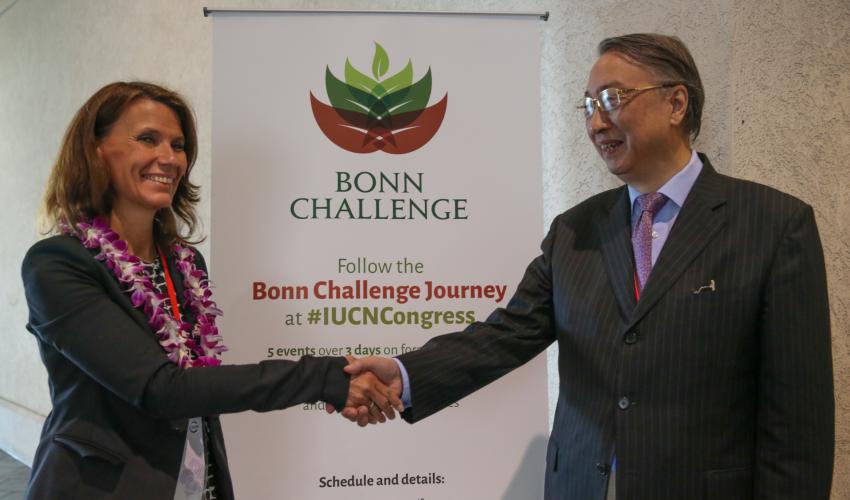 Photo: IISD/ENB | Kiara Worth and Diego Noguera
Photo: IISD/ENB | Kiara Worth and Diego Noguera
The session then turned to a high-level panel moderated by Andrew Steer (President and CEO, World Resources Institute). Hon. Sydney Alexander Samuels Milson (Minister of Environment, Guatemala) opened by highlighting important lessons from Guatemala’s perspective: the need to have the political will to raise awareness about the problem of land degradation and deforestation; the need for broad participation from civil society, indigenous peoples, and the private sector in order to build long-lasting partnerships; and the need to build strategic alliances with all sectors that are traditionally not involved in restoration.
José Pedro de Oliveira Costa (National Secretary of Biodiversity and Forests, Ministry of Environment, Brazil) shared the challenges Brazil faces with FLR and spoke about the difficulties in maintaining existing restoration while simultaneously calling for stronger restoration in Brazil. He highlighted the importance of Brazil’s new Forest Code (which has been in effect since 2012) in the conservation of native forests and emphasised that while the challenge is “immense,” there are FLR opportunities in Brazil as well; including a new national plan for restoration that will be soon in progress.
Rosa Lemos de Sà (CEO, Funbio) spoke about the encouraging prospects for restoration at a large scale in Brazil while emphasising the need to engage the private sector in FLR efforts in order to “make a business out of it,” stating that with significant political support and diverse financial aid, Brazil can reach 12.5 million hectares of restored forest land.
In his remarks, Marcelo Furtado (Executive Director of Arapyaú Institute, representing the Brazilian Coalition on Climate, Forests and Agriculture) underscored that unless there is consensus and collaboration about what countries are willing to do together, there will be no success. Furthermore, Furtado stated four key items that he believes are needed to achieve the Bonn Challenge: (1) consensus, (2) strategic use of resources, (3) applied science, and (4) the need to bring social-environmental struggles (i.e. land ownership issues, indigenous rights) into the political sphere.
Aida Greenbury (Managing Director of Sustainability and Stakeholder Engagement, Asia Pulp & Paper Group, the first private company to make a commitment to the Bonn Challenge) spoke of the company’s mission to develop new business models in the face of the need for FLR efforts; including efforts to de-risk investment and protect the landscape from which they source their materials. Greenbury concluded by emphasising the role of businesses in restoration.
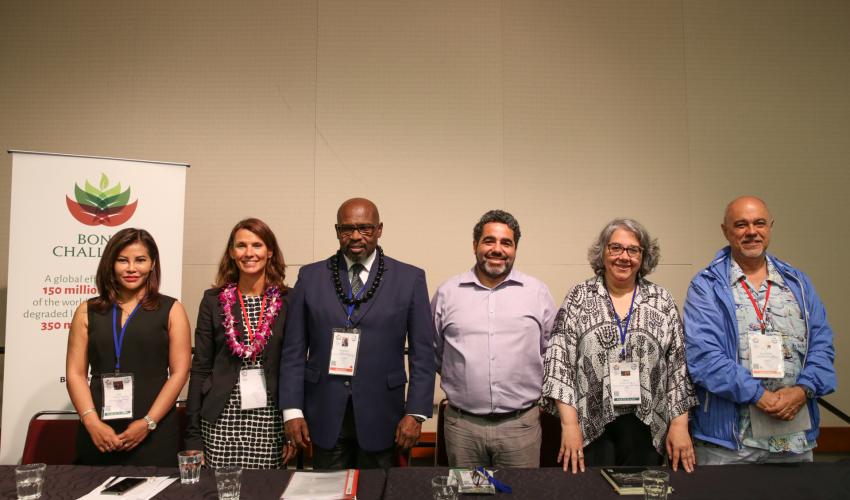 Photo: IISD/ENB | Kiara Worth and Diego Noguera
Photo: IISD/ENB | Kiara Worth and Diego Noguera
Concluding the day’s workshop, Stewart Maginnis remarked that the Bonn Challenge has “changed the dialogue,” and signifies a tipping point from commitment to action. “All of these responses are beyond single projects, rooted in integration of forest landscape restoration into corporate and national policy, resource mobilisation... to deliver against priorities in national economic development plans.” Maginnis closed by stating, “I think we will see the commitments of the Bonn Challenge achieved at the end of this year or the beginning of next.”
